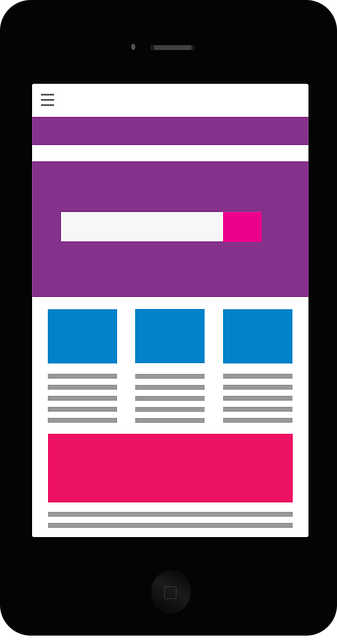Responsive Web Design (RWD) is essential for creating adaptable websites that optimize viewing across all devices, from desktops to smartphones. By using flexible layouts, media queries, and performance optimizations, developers ensure a seamless user experience with enhanced accessibility, speed, and engagement. Custom RWD solutions, coupled with modern tools and technologies, allow businesses to stay competitive in the digital landscape while adhering to search engine rankings and user preferences. Regular testing and iterative improvements are crucial for maintaining optimal performance as technology evolves, incorporating AI, VUI, AR, and VR for personalized, engaging experiences.
In today’s digital era, a robust online presence demands Responsive Web Design—a fundamental approach ensuring websites adapt seamlessly across various devices and screens. This article explores the essence of responsive web design, highlighting why custom solutions are vital for modern websites. We delve into key components, best practices, optimization techniques, and future trends, equipping you with insights to create effective, user-friendly experiences. Understanding these principles is essential for developers aiming to thrive in the competitive online landscape.
Understanding Responsive Web Design: The Basics

Responsive Web Design is a fundamental concept in modern web development, ensuring websites adapt seamlessly to various devices and screen sizes. This approach is no longer an option but a necessity, given the diverse range of gadgets used to access the internet—from desktops and tablets to smartphones and smart watches. The core idea behind Responsive Web Design (RWD) is to create flexible layouts that adjust content, images, and other elements based on the user’s screen dimensions.
Instead of designing fixed-width pages that may appear distorted or unreadable on smaller screens, RWD utilizes media queries—CSS rules that allow developers to apply specific styles depending on the device’s characteristics. This dynamic approach guarantees users enjoy an optimized viewing experience regardless of their preferred platform, making web content accessible and engaging for everyone.
Why Custom Responsive Solutions Are Essential for Modern Websites

In today’s digital era, where users access websites from a myriad of devices, having a responsive web design is no longer a luxury but an essential. Custom Responsive Web Solutions play a pivotal role in ensuring that websites adapt seamlessly to different screen sizes and orientations, providing an optimal user experience regardless of whether the site is viewed on a desktop computer, tablet, or smartphone. This adaptability is crucial for retaining visitors and enhancing engagement, as frustrated users are more likely to abandon slow-loading or poorly designed sites.
Moreover, search engines like Google favor responsive websites in their rankings. With a custom solution, businesses can avoid the pitfalls of mobile-unfriendly designs, ensuring their online presence remains visible and competitive. A responsive site not only boosts accessibility but also improves loading speeds, which are critical factors in user satisfaction and search engine optimization (SEO). This dual benefit ensures that modern websites not only look good on every device but also perform well, ultimately driving better conversions and business growth.
Key Components of a Successful Responsive Website

A successful responsive web design goes beyond merely adjusting layouts for different screen sizes. It involves a careful consideration of several key components that work together to deliver an optimal user experience across all devices. Firstly, a robust and flexible layout is essential, using CSS media queries and flexible grid systems to adapt content and visuals seamlessly. This ensures the website adjusts gracefully from large desktops to tablets and smartphones, maintaining readability and usability regardless of the screen size.
Secondly, performance optimization is vital for a responsive site’s success. Efficient image compression, lazy loading techniques, and minimal JavaScript usage help reduce page load times, especially on mobile networks. Additionally, ensuring fast navigation with clear menus and quick link placement enhances user engagement, encouraging visitors to explore more of the website without frustration or delay.
Designing for Multiple Screens and Devices

In today’s digital landscape, designing for multiple screens and devices is paramount for any successful online presence. Responsive Web Design (RWD) ensures that websites seamlessly adapt to various screen sizes and resolutions, providing an optimal viewing experience regardless of whether users are on a desktop computer, tablet, or smartphone. This approach involves using flexible layouts, images, and CSS media queries to adjust content and design elements dynamically.
By embracing RWD, businesses can reach a broader audience and improve user engagement. For instance, a responsive design accommodates the smaller screens of mobile devices, making navigation easier for users on-the-go. It also reduces bounce rates by ensuring that content loads quickly and efficiently across all platforms, fostering better interactions and conversions. This versatility is crucial in today’s diverse digital environment where consumers expect seamless experiences across multiple touchpoints.
Best Practices for Creating Fluid Layouts

When crafting responsive web layouts, adhering to best practices ensures a seamless user experience across various devices and screen sizes. One fundamental principle is using a flexible grid system that adapts gracefully as screens change. This involves setting up columns with relative widths instead of fixed pixel values, allowing content to redistribute effectively. By employing media queries, developers can apply specific style rules based on the device’s dimensions, ensuring optimal viewing and interaction.
Another crucial practice is prioritizing mobile-first design, where the basic structure and content are optimized for smaller screens before scaling up for larger ones. This approach not only improves loading times but also guarantees that essential elements remain accessible and legible regardless of the user’s device. Additionally, regular testing on different platforms and emulators helps identify and address layout issues, ensuring a consistent and visually appealing Responsive Web Design experience for all users.
Optimizing Content Delivery and Performance

In the realm of Responsive Web Design, optimizing content delivery and performance is paramount. Custom solutions ensure that websites seamlessly adapt to various devices and screen sizes, providing users with an optimal experience regardless of their access point—be it a desktop, tablet, or mobile phone. By implementing efficient coding practices, compressing media assets, and leveraging browser caching, developers can significantly enhance load times, ensuring fast and responsive interactions.
These strategies not only improve user satisfaction but also play a crucial role in search engine optimization (SEO). Faster loading pages are favored by both users and search engines, leading to better rankings and increased visibility online. Thus, optimizing content delivery is more than just about aesthetics; it’s a strategic move to engage audiences effectively and stay competitive in the digital landscape.
Tools and Technologies for Responsive Development

In the realm of responsive web design, developers have access to a robust set of tools and technologies that streamline the process of creating dynamic, adaptable websites. These include cutting-edge frameworks like Bootstrap and Tailwind CSS, which offer pre-designed components and flexible layouts, enabling faster development and consistent responsiveness across various devices. JavaScript libraries such as jQuery also play a pivotal role in enhancing user interactions and making web pages more dynamic.
Additionally, modern development environments incorporate powerful code editors like Visual Studio Code and advanced debuggers to ensure seamless coding experiences. Version control systems such as Git facilitate collaboration and help manage changes in the codebase effectively. These technologies collectively empower developers to build custom responsive web solutions that not only meet but exceed user expectations for a seamless browsing experience on any device.
Measuring and Testing Your Responsive Web Solution

Measuring and testing your responsive web solution is a crucial step in ensuring its effectiveness across various devices and screen sizes. It involves using tools like Google’s Mobile-Friendly Test to verify that your site adapts seamlessly, maintaining readability and functionality on smartphones, tablets, and desktops. This process isn’t just about checking visual adjustments; it encompasses interactivity, loading speeds, and overall user experience.
Responsive Web Design isn’t a one-time event but an iterative process. Continuous testing reveals potential issues like broken links, image distortions, or content overlap that may occur as screen dimensions change. By regularly evaluating your site’s responsiveness, you can quickly identify and fix problems, ensuring your web solution remains optimal for all users, regardless of the device they’re on.
Future Trends in Responsive Web Design

As technology continues to evolve, so does the landscape of web design. Future trends in Responsive Web Design are set to be even more dynamic and user-centric. One prominent trend is the increased use of AI and machine learning algorithms to adapt websites to users’ preferences and behaviors in real time, ensuring a personalized experience for everyone. This technology can anticipate content needs, optimize loading speeds, and tailor layouts, creating a seamless and efficient user journey.
Another exciting development is the integration of voice user interfaces (VUI) and gesture controls. With more people adopting smart speakers and virtual assistants, designing for voice interaction becomes crucial. Additionally, gesture-based navigation on touchscreens is gaining popularity, especially with the rise of augmented reality (AR) and virtual reality (VR). These innovations in Responsive Web Design aim to bridge the gap between physical and digital experiences, making websites more interactive and accessible than ever before.
